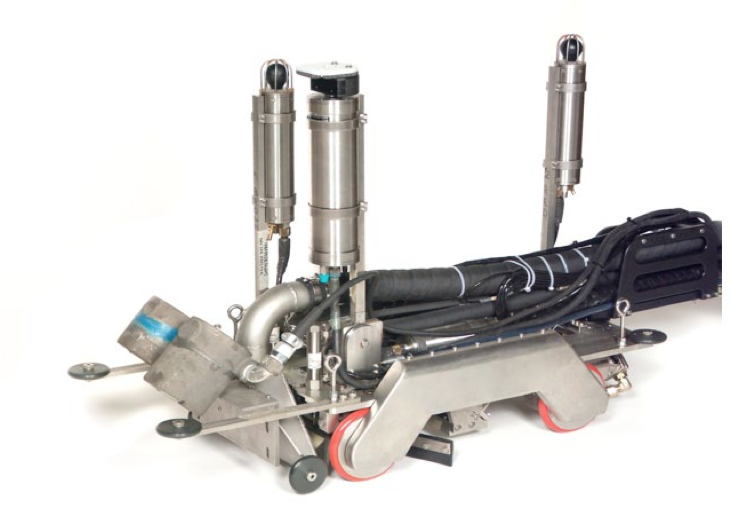Introduction
A unique technique for inspecting and cleaning the floors of an Above Ground Storage Tank (AST) emerged in the late 90’s based on In-Service Robotic Technology. The technology has come a long way since then, with new inspection and tank cleaning capabilities, greater operational efficiency, and a much broader user base. The number of tanks inspected using In-Service Robotics has now exceeded the 700 mark. Industry now has an alternative for determining the minimum floor thickness of tanks in order to establish the next optimum time for an Out-of-Service inspection. This can be accomplished without taking the tank out of service. Compliant with API Std 6531 guidelines for determining tank floor corrosion rates, and when combined with an API 653 tank external survey, TechCorr, a multinational based full service inspection firm, is applying this method providing the tank owner with a comprehensive picture of the AST’s condition without taking it out of service and the ability to remove sludge at the same time. Although there is a population of tanks that require Out-of-Service inspections because of the tank’s condition, age and inspection history, there is a growing population of tanks that will benefit from the introduction of this technology.
This article discusses specific technical capabilities for the use of In-Service, high density, ultrasound scanning for assessing the condition of AST floors. Topics such as safety and environmental risk reduction are also covered as well as the technologies cost-savings track record. The ability to desludge/clean the tank floor is an additional capability of the robotic system, however it is not addressed in detail by this paper.
Conventional Out-of-Service Inspections
The conventional method for inspecting tanks requires an operator to completely free the tank of product and vapor. Product is drained first through fixed lines and then temporary lines to remove most of the volume. Squeegees, diesel diluent and water are frequently used to remove residual product. Occasionally, fans are used, sometimes in conjunction with vapor recovery/burning equipment to remove tank vapors.
Today, there is increasing use of robotics to reduce the downtime and to initiate sludge removal from day 1 after emptying the tank. TechCorr has multiple tools to achieve this, the details of which are outside the scope of this paper. Once the tank is certified as vapor free, the tank floor is prepared for inspection, often by sand blasting. A variety of inspection techniques are then utilized, including Magnetic Flux Exclusion (MFE) and contact Ultrasound Testing (UT). Repairs are made, if required, the tank manways are resealed, and the tank is returned to service. The entire process may take one week to six months depending on the tank size, product, plant and contractor schedules, and scope of repairs.
Robotic In-Service Inspections
The robotic process for tank inspection involves a robot tethered via an umbilical to an advanced control and monitoring system. The robot is lowered to the tank bottom while the tank is in service, navigating across the tank floor using systems capable of mapping the tank floor and locations where high density UT data is collected. Robot location accuracy is on the order of +/- 1 to 2 inches in absolute terms and down to mm in relative terms. A pump mounted behind the robot removes water and sediment from the tank floor, and a series of immersion transducers located under the robot takes UT thickness readings on the tank floor, measuring floor thickness in order to identify both top-side and bottom-side corrosion. A photo of the system is shown in Figure 1.

















Comments and Discussion
Add a Comment
Please log in or register to participate in comments and discussions.